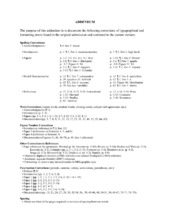The Feedback Method. A System Dynamics Approach to Teaching Macroeconomics
Doctoral thesis

Åpne
Permanent lenke
https://hdl.handle.net/1956/2239Utgivelsesdato
2007-05-04Metadata
Vis full innførselSamlinger
- Department of Geography [634]
Sammendrag
This thesis documents a method for improving undergraduate instruction inmacroeconomics. Called the feedback method, it enables students to learn about dynamicbehavior in a market economy by using feedback loop diagrams and interactive computersimulation models instead of static graphs or differential equations. There are at least twotypes of pedagogical problems associated with graphical representation of the economy.First, students seem to have difficulty interpreting static graphs used to illustrate dynamics,which raises questions about the value added by graphs to student understanding. Secondly,the most prominent graph in modern macroeconomics principles textbooks—the aggregatesupply and demand (AS/AD) model—appears to misrepresent disequilibrium conditions inthe economy and cause students who understand the graph to misunderstand importantbehavior in the economy.The feedback method emphasizes dynamics rather than static equilibrium conditions.How the economy changes over time in different contexts is the behavioral question thatstudents repeatedly encounter. The structure of the economy is explained in terms ofreinforcing and counteracting feedback loops. Student understanding of the source ofdynamic economic behavior requires seeking, identifying, and explaining relevant feedbackstructure in an economic system. Interactive computer simulation activities reinforce theinsights gained from studying feedback loops. Even small-scale student participation inmodel-building seems to facilitate understanding of a larger model; moreover, suchparticipation may build respect for the scientific method and an appreciation for theory building by economists. The feedback method is a structural explanation of economic behavior, but it alsoprovides an improved learning structure for students, and the thesis reports on fourexperiments designed to test that claim. Two experiments examined student preferences formethods of learning macroeconomics; for example, using static graphs or a feedback loopdiagram. The experimental designs were quite different, but the results were the same—asignificant majority preferred the feedback method. The most commonly cited reason:feedback loops enable the students to visualize a process in the economy. The third andfourth experiments addressed the performance question. In the third experiment, studentsshowed more understanding of GDP when they had access to a stock-and-flow feedbackdiagram of the economy. In the final experiment, students using feedback loop diagramsdisplayed more understanding of business cycle dynamics than other students who had accessto an AS/AD graph. Teaching students to search for feedback structure in the economy andusing computer simulation to connect structure with behavior appears to be a promisingmethod for teaching macroeconomics.
Består av
Paper I: Wheat Jr., I. David, 2007, Feedback Loops in the Macro Instructor’s Toolkit. Preprint version. (Paper presented at the research session of the National Economics Education Association at the Allied Social Sciences Association Conference. Chicago, January 2007.)Paper II: Wheat Jr., I. David, 2007, Student Preferences when Explaining Dynamics. Preprint version.
Paper III: Wheat Jr., I. David, 2007, Student Preferences when Learning Dynamics. Preprint version.
Paper IV: Wheat Jr., I. David, Do Stock and Flow Feedback Diagrams Promote Learning in Macroeconomics? Preprint version.
Paper V: Wheat Jr., I. David, 2007, Teaching Business Cycle Dynamics: A Comparison of Graphs and Loops. Preprint version.